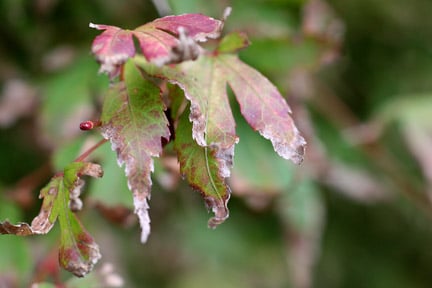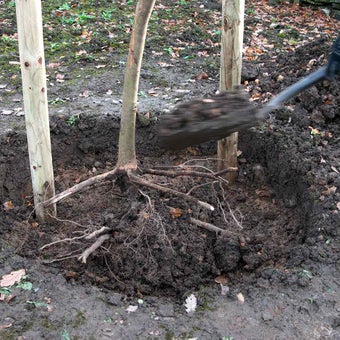
Quick facts
Common name - Japanese maple
Botanical name - Acer palmatum
Plants affected - Japanese maple and some other maples
Main causes - Frost, drought, drying winds, hot sun
Timing - Spring to autumn
What is acer leaf scorch?
Leaf scorch rarely causes long-term damage, but it can leave an affected tree unsightly for the remainder of the growing season. Scorch happens whenever water is lost from the leaves more quickly than the roots can take it up. A wide range of environmental factors can cause this such as frost, drought including under-watering, waterlogging, drying winds, hot sun and even salt-laden winds in coastal areas.
Symptoms
The foliage on affected trees turns brown, particularly around the tips and margins. It is often followed by the leaves curling and shrivelling. In some cases whole leaves can become entirely crispy and there may be some minor die-back of branches.
While Japanese maples are most commonly affected, other maples such as Acer pseudoplatanus ‘Brilliantissimum’ and Acer platanoides 'Drummondii' may also suffer from leaf scorch.
Control
Avoiding leaf scorch
- Choose a sheltered spot protected from strong, midday sunshine
- Plant in moisture-retentive but well-drained soil
- Avoid planting in wet soils or on sites that are prone to drying out
- Use a such as John Innes No 2 if planting in containers
- Don’t feed too early or too late in the season (don’t feed between November and March). Avoid over application of high nitrogen fertilisers
- Keep new specimens and container-grown plants well watered
- Mulch around the base of trees growing in the ground with organic matter, such as garden , to help retain moisture. Make sure the is kept away from the trunk of the plant
- Mulch the surface of the compost in containers with gravel or slate, again to retain moisture
- If frost is forecast when the leaves are newly emerged, move container plants to a sheltered spot or frost-free area and cover plants in the ground with a double layer of
- In very windy weather, a temporary windbreak is a worthwhile – formed by stretching a screen of wind-reduction netting between canes
Dealing with acer leaf scorch
- If leaves of container-grown plants become scorched, move the pot to a more sheltered position
- Removing affected leaves is usually impractical. Badly affected foliage may drop of its own accord and remember that all the leaves will be shed in the autumn regardless
- Move young plants that are in the wrong position, lifting them between October and March when the soil is not frozen or
- Prune out dead shoots between late summer and mid-winter. Pruning at other times may lead to bleeding
For a full list of other acer problems, see our plant profile.











